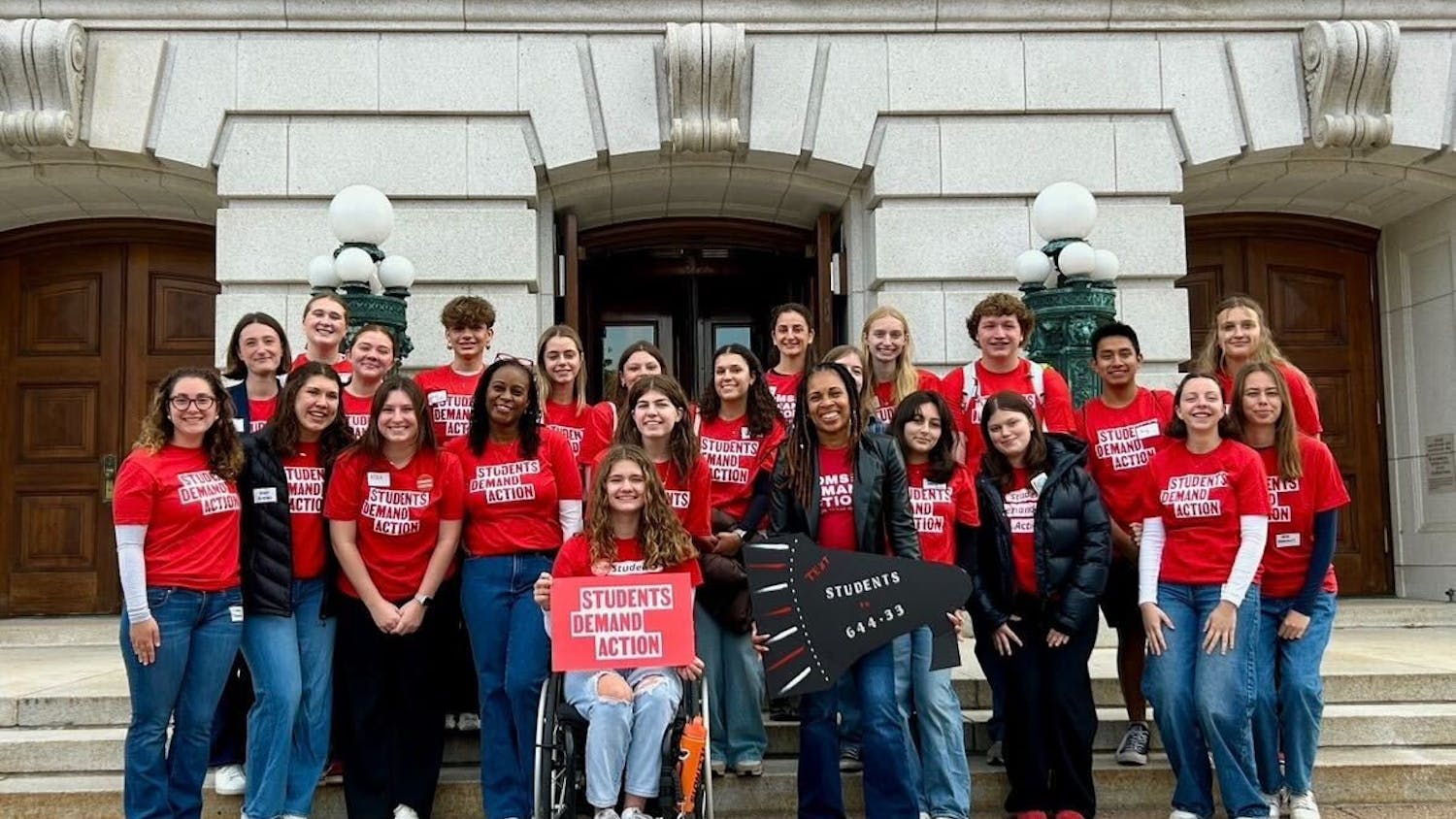For 17 years, researcher Ei Terasawa restrained rhesus monkeys and left them fully conscious while repeatedly pumping deadly chemicals into their exposed brains. It wasn't until the U.S. Department of Agriculture (USDA) discovered that a neglected monkey had accidentally died under her care that her push-pull perfusion experiment was put on hold and the treatment of primates in lab settings was reevaluated.
""There really aren't any studies that don't have extra problems associated with them,"" said Executive Director of the Alliance for Animals and cofounder of the Primate Freedom Project Rick Bogle. ""The experiments are particularly heinous.""
Terasawa was a senior researcher at UW-Madison when her treatment of animals was made public.
Recently, the university made headlines again after the USDA the Office of Laboratory and Animal Welfare found 20 violations, including depressed and vomiting dogs, during a surprise visit last month.
As one of only eight federally supported research facilities in the nation, UW-Madison is often at the center of controversy surrounding the ethics behind using animals as test models.
According to the 2009 annual report from the National Institutes of Health (NIH), the Wisconsin National Primate Research Center, which works closely with the university, imported and bred a total of 1,339 monkeys.
The monkeys used in the research are housed in a number of buildings around campus, said Bogle, where they become the victims of psychological, viral, hormonal and physiological investigation.
Confined to cages for decades, ""they're basically locked in a box,"" he said.
Bogle says this stressful, limiting environment contributes to what he believes is a high degree of self-mutilation and chronic diarrhea among the lab monkeys.
""We know that [primates'] mental lives are very similar to ours,"" said Bogle. ""In human terms, solitary confinement is considered cruel and unusual punishment, and yet we are keeping them in those situations sometimes for their entire life.""
But those involved in primate research argue the health breakthroughs from experimentation generally outweigh the adverse affects on the animals.
According to the Wisconsin National Primate Research Center's web site, within the past century, primate research has been used to help treat serious illnesses, such as polio, measles and pneumonia. And scientists are continually using animal experiments to find cures for HIV, determine risk factors for polycystic ovary disease and perfect embryonic stem cell use, among many other projects.
Specifically, rhesus monkeys are good models for learning about HIV, said Jordana Lenon, public information officer and outreach specialist for the Wisconsin Primate Research Center and the Stem Cell and Regenerative Medicine Center at UW-Madison. Their reaction and symptoms to Simian Immunological Virus (SIV) are almost identical to a human who is infected with HIV, although the pathology process develops faster in monkeys. While a human would develop the symptoms of AIDS within seven to 10 years, it would take a rhesus monkey only one to two years.
""This is good, because we're trying to understand how HIV affects the body early on,"" said Lenon.
Yet all monkeys infected with SIV must eventually be killed before they suffer from AIDS symptoms.
That is why monkeys, rather than humans, are used as test models, said Lenon. The U.S. government has declared it is wrong to perform certain invasive experiments on humans, especially if they may lead to death. She says society as a whole is only comfortable with infecting animals.
But Bogle insists that the benefits of HIV research do not outweigh the infected monkey's death in the end. He asks, ""What is our justification for testing on animals and not humans?""
The university takes a utilitarian approach, modeled after the government's principles for the care and use of vertebrate animals used in testing, research and training.
The approach is essentially a balancing test of potential harms and benefits, said Eric Sandgren, the director of UW-Madison's Research Animal Resources Center.
""If an animal has rights, you can't apply that test,"" he said.
Sandgren explains that a right is a privilege granted to an individual, protecting that individual from the majority.
""I draw my line at the human-nonhuman boundary,"" he said.
Sandgren believes it is unethical to use people in lab experiments because they possess the ability to understand the basic concept of human rights, while primates and other animals cannot.
Bogle looks at the ethical dilemma differently, arguing that it's about freedom of choice, not intellectual capacity.
He says all testing on animals is immoral because they can't refuse to be part of a study: ""The only ethical way to proceed with research, if we're going to continue to test on live subjects, is to have all experimentation be voluntary.""
Until a solution can be found that satisfies all sides, the university has taken measures to guarantee the best possible environment for lab animals given its resources, said Lenon.
Within the labs, caretakers provide enrichment for their test models. Music and movies play throughout the day and the animals are given toys with fruit hidden inside to challenge them. They also try to stimulate the primates' senses, often popping popcorn so the monkeys can hear, smell, taste, touch and see an object simultaneously.
Both Lenon and Sandgren emphasize that proper treatment is an essential requirement for the continuation of a study so that accidents like Terasawa's are not repeated.
""Once a grant gets funded, we don't just sit in isolation and do these experiments,"" Lenon said. ""If you get violations on how you treat your animals, you can be shut down. We're definitely not above the law.""
Sandgren said that researchers will be suspended or fined, and often have to attend animal ethics classes for failure to comply with regulatory standards.
Regulation occurs at several levels. Nationally, the Animal Welfare Act enforces laws that ensure appropriate care of animals in all settings. The National Health Service has also established specific guidelines that must be followed if a program accepts funding. Locally, the Animal Care and Use Committee (ACUC), a group of 10 to 25 members, review animal experiments. There are a total of five ACUC's at the university and these committees approve research requests, as well as evaluate and improve animal experiment protocols.
The committees take a proactive approach to catch problems before they occur, explained Sandgren. ""We're never optimal, but we try as hard as we can to be as close as possible [to following regulatory guidelines].""
Still, animal activists like Bogle are not convinced. He maintains that there is no excuse for jeopardizing an animal's welfare.
""No matter how different they are from me, they're experiencing life. That should matter.""
Life is precisely what drives scientists to use animals as models.
""There will always be a question that needs a living organism to find the answer,"" said Sandgren. ""Animals are our surrogates.""






